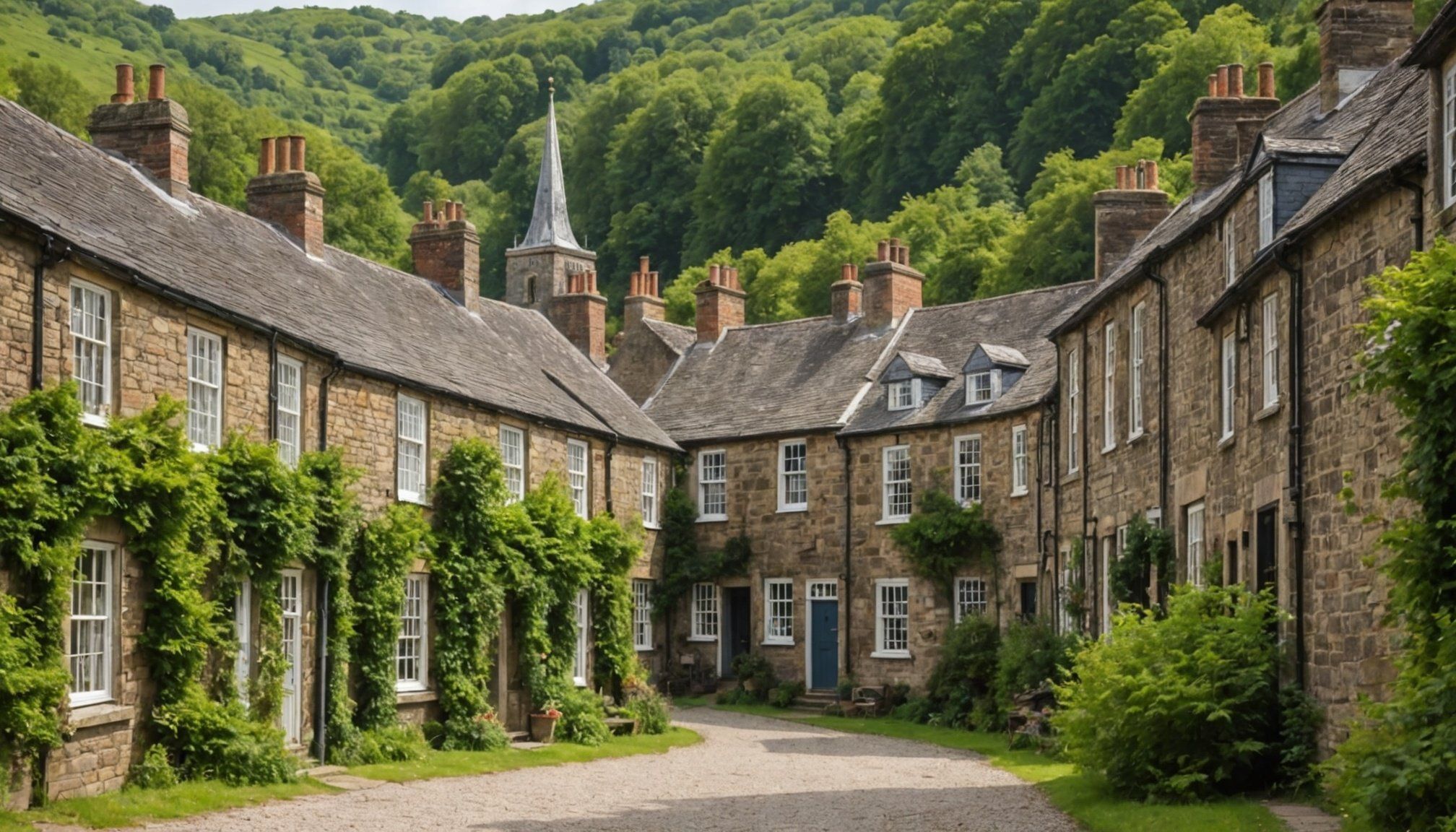Top UK Towns for Georgian Era Walking Tours
Exploring Georgian towns through historical walking tours in the UK offers a unique way to engage with the country’s rich past. The Georgian Era, noted for its cultural and architectural developments, has left a significant mark on British history. This period, spanning from 1714 to 1830, saw the rise of notable architectural designs, from elegant townhouses to grand public buildings.
Selecting towns for a Georgian architecture tour involves considering the density and preservation of Georgian-style structures. Towns like Bath, renowned for its exquisite Georgian terraces, or Edinburgh, recognized for its New Town, showcase the finest examples of this era’s architecture.
Also to see : Uncovering the Depths: Top UK Destinations for In-Depth Coal Mining History Tours
Historical walking tours allow one to immerse in the ambiance of the Georgian period, with knowledgeable guides often sharing intriguing anecdotes and historical context. This method of exploration is both engaging and educational, providing an intimate look at the craftsmanship and urban planning of the time.
Benefits of these tours include a deeper appreciation of historical craftsmanship and an understanding of the socio-cultural dynamics of the Georgian Era. Whether you’re a history enthusiast or a casual traveller, these tours offer an enriching journey through the intricate legacy of Georgian heritage.
Also to discover : Discover Engaging Interactive Workshops on the Rich History of British Naval Chart Making
Detailed Guide to Each Featured Town
Exploring the towns with rich histories and vibrant architecture can be rewarding. Each offers distinct town features worth discovering through both guided tours and self-guided tours.
Bath
Bath is celebrated for its exquisite historical context and architectural highlights, particularly its Georgian splendour. Visitors can enjoy popular guided and self-guided tours that delve into its history and architecture. For instance, the Roman Baths and the Royal Crescent are must-see highlights. Opt for a guided tour to gain insights from knowledgeable guides or choose a self-guided tour to explore at your own pace. To maximise your visit, consider starting early to avoid crowds and wear comfortable attire for extensive walking.
Edinburgh
Edinburgh boasts key Georgian sites and cultural landmarks that blend history with modern culture. Tour companies offer various tours that cater to different interests, from the historic Royal Mile to the iconic Edinburgh Castle. To make the most of a walking tour, visit during the off-peak seasons and embrace the local culture at leisure. An overview of walking routes can help plan an unforgettable visit.
Chichester
Chichester is steeped in Georgian architecture and local history. It’s ideal for those interested in history and architecture. Walking tours and itineraries explore landmarks such as the Chichester Cathedral and Pallant House Gallery. Access is generally easy, although it’s advisable to check for accessibility options related to mobility needs. Plan ahead to ensure a seamless and memorable exploration.
Essential Historical Context and Significance
Understanding Georgian history requires exploring the dynamic social and cultural landscape of the era. The Georgian period, spanning from 1714 to 1830, was a time of significant transformation, with widespread changes in society and culture. These shifts were reflected in various facets of life, including architecture, where the evolution of design styles mirrored the evolving tastes and priorities of the time.
The era’s architectural significance is readily apparent through the transition from Baroque to Neoclassical styles, showcasing a desire for symmetry, proportion, and the emulation of classical antiquity. This architectural evolution not only altered cityscapes but also had a profound cultural impact, illustrating the period’s intellectual currents and societal values.
Notable figures such as architects Robert Adam and John Nash played pivotal roles in defining the architectural aesthetics of the time, influencing the way buildings were designed and perceived. Events like the Enlightenment further moulded the ideological landscape, leaving a lasting imprint on how society viewed progress and modernity.
Thus, the Georgian era is characterised by its rich tapestry of cultural and architectural developments, which continue to influence contemporary design and cultural discourse.
Practical Information for Tourists
Planning your walking tour requires understanding the best times for travel and efficient use of planning resources. For an ideal experience, visiting during spring or early autumn delivers perfect weather, with cool breezes enhancing city exploration. Holidays may cause fluctuation in tour availability, thus planning ahead is crucial.
Booking in advance is key to securing spots in preferred tours. Utilize online travel tips to assess popular options. Websites and apps provide valuable resources for managing schedules and getting alerts on tour availability. Consider using digital maps for route planning to save time and maximise your walkabout experience.
When booking accommodations, proximity to your starting location can enhance convenience and reduce transit challenges. Look for local hotels or bed-and-breakfasts that deliver authentic experiences and good reviews. Explore dining options that offer a taste of the local fare; many platforms now offer suggestions based on real-time reviews and location-based recommendations, ensuring you experience the best cuisine.
These strategies not only enrich your planning but provide a thoughtful way to enhance your tour satisfaction. By using these travel tips, your journey becomes more organised and enjoyable.
Visual Documentation of the Walking Tours
Embarking on a visual tour guide allows travellers to fully immerse themselves in the charm of Georgian architecture. These stunning structures, with their unique details, provide endless photographic highlights for those interested in preserving their journey through imagery.
Capture the Georgian Essence
Photography plays a pivotal role in documenting the essence of these tours. Capturing the iconic Georgian buildings often tells stories that words cannot encompass. Locations such as Bath’s Royal Crescent or Dublin’s Fitzwilliam Square are perfect for these photographic moments.
For a more personal touch, consider creating a visual narrative that shares personal anecdotes alongside compelling imagery. These can transform photos from mere records into captivating stories.
Map Visualization of Walking Routes
Understanding the layout of your tour through maps is essential, especially when deciding between guided and self-guided experiences. Utilizing map tools and apps can offer precise navigation, ensuring you don’t miss any photographic highlights.
Incorporating digital resources, such as interactive maps from towns like Edinburgh or Bristol, can further enhance your Georgian architecture discoveries. These tools help travellers ensure a rich and organised exploration, fostering deeper appreciation of each highlighted stop on their journey.
Conclusion and Future Exploration
Exploring lesser-known towns with Georgian heritage offers a unique glimpse into the past. While popular destinations are easy to find, these hidden gems provide a more intimate understanding of the era. By venturing into areas off the beaten path, travellers can discover architectural marvels and historical narratives that are often overlooked.
For those keen on expanding interests in this fascinating period, numerous resources are available. Digital archives, guided tours, and local museums dedicated to the Georgian Era provide ample opportunities for ongoing learning. These resources not only enrich knowledge but also deepen appreciation for the complexities of this historical time.
Preserving such heritage is crucial in modern tourism. Heritage preservation ensures that future generations can continue to enjoy and learn from these storied locales. It involves maintaining sites and narratives for educational and cultural enrichment. As tourists embark on future tours, they should consider their role in supporting preservation efforts. This can be as simple as engaging with conservators and communities or choosing tour operators committed to sustainable practices.
Incorporating these considerations into travel plans not only benefits individual experiences but also contributes positively to the global effort of understanding and preserving historical identities.











